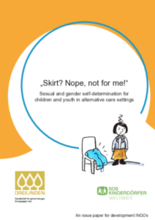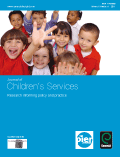Displaying 301 - 310 of 498
This issue paper explores the experiences of lesbian, gay, bisexual, transgender and intersex (LGBTI) children and young people in alternative care settings and highlights some promising practices.
This report presents research on the impact of two cash transfer programs for vulnerable children in South Africa on children’s care.
This investigation into economic migration of Guatemalan parents shows that the timing of migration events in relation to left-behind children’s ages has important, often negative and likely permanent, repercussions on the physical development of their children.
Large scale studies published in the 1990s and early 2000s generally showed that significant educational disparities existed based on orphan status and a child's relationship to the head of the household. Since the data relied on by these studies were collected, the global community has conducted major campaigns to close these gaps, through the Education for All (EFA) and Millennium Development Goals (MDGs). This study examined these factors using eight country-years from five sub-Saharan African countries (Malawi, Mozambique, Niger, Uganda, and Zimbabwe).
This review was established to examine the reasons for, and how best to tackle, the over representation of children in care, or with experience of care, in the criminal justice system in England and Wales.
This is a 15 month qualitative study involving semi-structured interviews with families and boys at three stages: preparing for return, in the first three months of reintegration and successfully reintegrated.
This report describes the situation and experience of families during the economic crisis and examines how family-focused policies have changed since 2010 in the European Union.
This is an explorative study undertaken in central and south part of the Mumbai with the objective of investigating socio-economic, demographic and cultural characteristics of street adolescents in Mumbai.
This report tells the story of “forgotten children,” children who are relegated to the margins of society due to discrimination and subjected to the hardships of poverty. The report is aimed at identifying what is required to meet the needs of these children and to ensure their basic rights to survive and thrive, to learn, and to be protected.
This Country Fact Sheet from Moldova reports that since 2007, the number of children in institutional care has dropped from 12,000 to 2,214.







